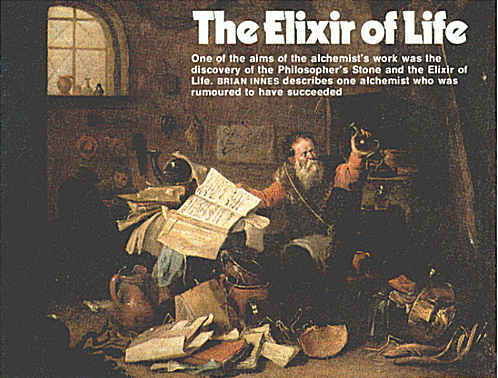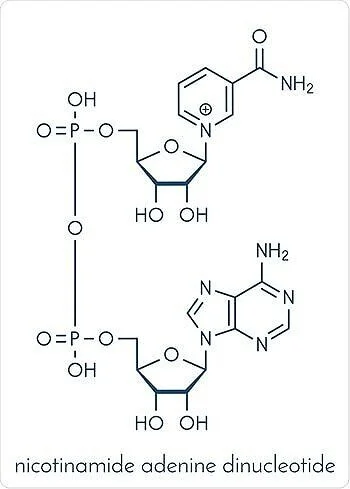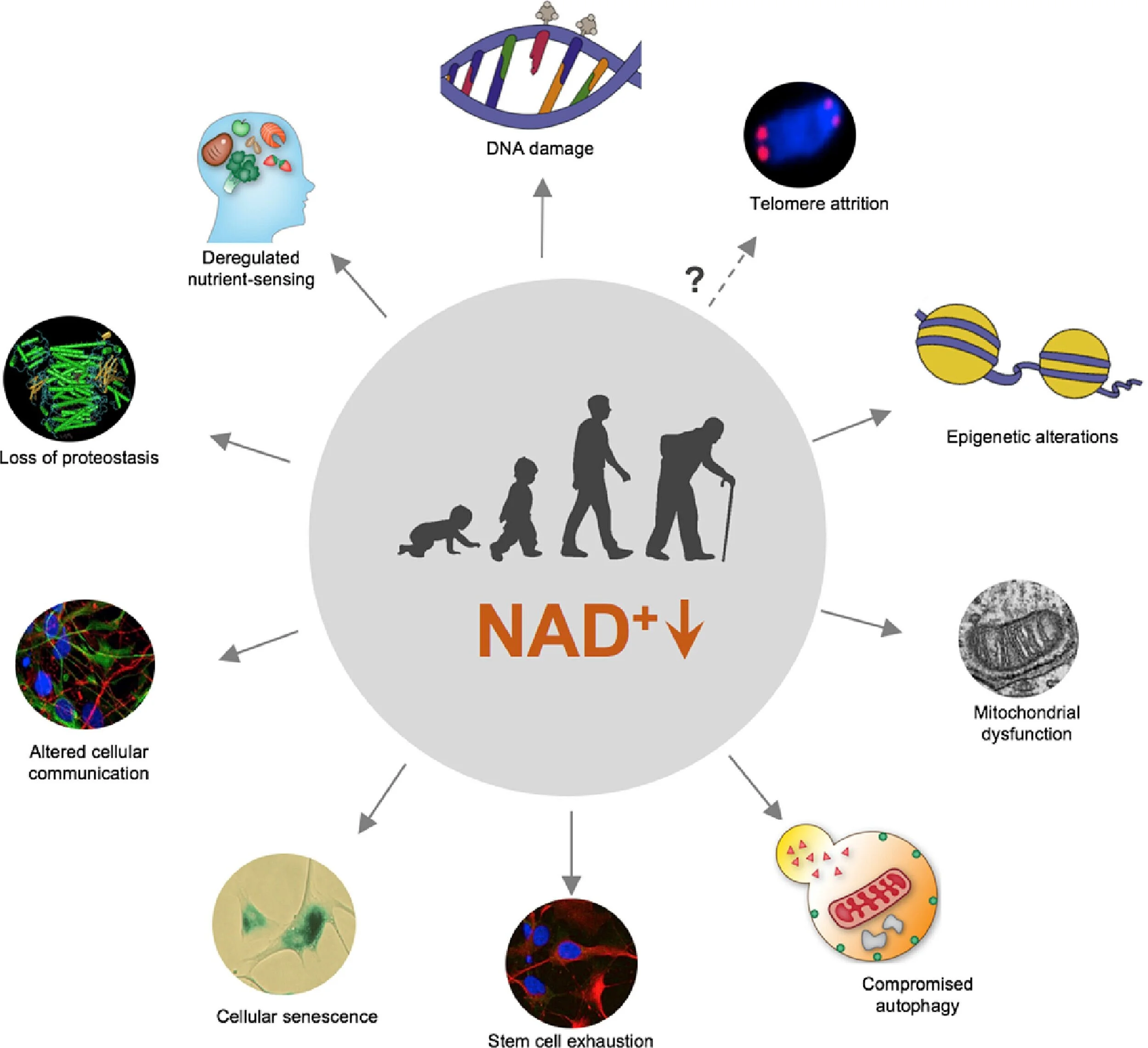NMN---Is It the “The Fountain of Youth” We Are Looking For?
Human being has been searching for a miracle medicine that can keep people forever young since the beginning of human civilization. The story of the “Fountain of Youth”, which talked about a mythical spring that can restore the youth of anyone who drinks or bathes in its water, has been recounted many times around the world since 5th century BC in the writings of Ancient Greek, Rome, Arab, India, and America. In real world, people have been looking for such wonder water for centuries. One such well-known story is that in 16th century a Spanish explorer called Ponce de Leon explored around Caribbean to look for the “Fountain of Youth” and believed he found one at what we now call Florida, US. The spring that is believed to be the “fountain of youth” he found is now a public park and many people have drunk its water for centuries, but none of these people have lived forever.
During the Middle Ages in Europe, many Alchemists tried very hard to find a wonder potion that can cure all diseases or grant people eternal youth. They called such magic medicine “elixir of life” or simply elixir. As we all know, Alchemists did not find that magic potion but, instead, help set the foundation of modern chemistry.
In Ancient China, one of the well-known stories should be that, in 219 BC, the Chinese 1st emperor, Qin Shi Huang, sent his subordinate, Xu Fu, with 3000 young girls and boys to look for the immortal medicine for him in Penglai island located in East China Sea, but it ended up that Mr Xu didn’t find the wonder medicine and fled to an island we now call Japan to avoid being killed by Qin Shi Huang.
However, after thousands of years’ failure of searching for the “Fountain of Youth” and with the advance of modern sciences, especially the widely accepted Darwin Evolution theory, during the past several hundred years, people have been educated and soundly believing in that death is a natural process and no one can prevent death. Almost all health organizations of governments around the world do not designate aging as a disease.
When people are sick with certain symptom like headache, they will go to see their doctors who will then give them a medicine that can relieve or, if lucky, totally get rid of their headache. Just like a Chinese saying: “Treat Head When There Is a Headache and Treat Foot When Foot Hurts!” Unfortunately, there are still many diseases, such as cancers and Alzheimer’s, that we do not have a good medicine to cure them yet. In addition, almost all modern medicines have some sort of, and sometimes, severe side effects.
In the meantime, almost all the modern biopharmaceutical companies around the world have been following the same philosophy or routine in that, for each disease, they will identify a certain biological target, and then find a particular molecule made in the lab that can inhibit or promote the biological activities of this disease-causing biological target, followed by spending billions of dollars to do clinical trials on humans to prove the safety and efficacy of this molecule for that particular disease. If successful, these biopharmaceutical companies will make billions and billions of more from the commercialization of their new medicines.
For several hundreds of years, the above healthcare systems seem working very well and no one have little doubt about it. However, during the past two decades, there are quite a number scholars around the world who are thinking a different way to deal with human being’s health, particularly aging and death. They are looking into whether we can find some ways to live a healthy and happy life with less or no age-related diseases till the end, or, even better, extended our lifespan. Some of the scholars are from prestigious academic institutes such as MIT, Harvard University, University of Washington at Saint Louis, Oxford University, and Cambridge University. At the full front of these scholars are Professors Leonard Guarente of MIT, David Sinclair of Harvard, Shin-ichiro Imai of Washington University at Saint Louis, and Charles Brenner of University of Iowa. These scholars believe in that, with the advances of modern biological studies, especially our better understanding of cell, molecular biology, and human genome in our body, we should be able to figure out why we are aging, to find ways to live a healthy life, and even to extend our lifespan, instead of passively waiting for diseases to come and then go to see doctors for a prescription of a certain medicines. This sounds like we are close to find the real “Youth of Fountain”.
These prominent scientists, instead of making molecules in the lab to interfere the activities of disease-causing biological targets as most current biopharmaceutical companies are doing, look at the many internal biological pathways of human body to identify those that affect human aging the most, and then find those key molecules that already exist in our human body and have critical impact on those aging related biological pathways. After many years of searching, Professors Guarente, Kennedy, Sinclair, Imai, Brenner, and many other scholars identified NAD+ as one of the key molecules in our human body that played a critical role on our aging and the many aging related health. These scholars concluded that the key to aging is that the cells of various tissues in our body lost functioning caused by epigenetic changes in the cell nuclei. Epigenome can be simply defined as the environments that impact genes’ function in cell nuclei. They further found NAD+ is involving in many critical biological activities in cells that impact epigenetic changes, such as being major cell energy source and playing key roles for damaged DNA repair. But its content decreases quickly when people aging.
They believe the lower content of NAD+ is one of the major keys why people are aging!
NAD+ was first discovered in 1906. After over 100 years of studies, scientists now have a very good understanding of its biological activities in our human bodies and its corresponding functions to human health. A summary of NAD+ is shown below:
NAD+ is chemically called nicotinamide adenine dinucleotide with chemical structure shown on the left.
NAD+ is a coenzyme called Coenzyme 1 and exists in all living cell in our human body and many other animals. NAD+ has long been known to play critical roles in our cell metabolic processes, of which glycolysis and Krebs cycle (also called TCA or citric acid circle) are two of the most important one that helps convert nutrients, such as sugar, fat, and proteins into energy and other critical nutrients in all of our cells as shown on the right. In fact, it is responsible for supplying almost all of our body energy.
The newer scientific breakthroughs on NAD+ are the discoveries that it plays critical role on the biological activities of two groups of very important proteins in living cells called PARPs and Sirtuins in 1960s and 1990s, respectively. Both are critical in DNA repairs and both are confirmed to have significant impact on longevity of mammals. As we now know, our DNA will be got damaged when aging and repairing the damaged DNA is very important on reducing age related diseases. The graph on the top left shows the damaged DNA repair under help of NAD+.
Professor Leonard Guarente of MIT began studying Sirtuins in earlier 1990s and discovered that SIR2, a sirtuin in yeast, extended the life of the yeast only when it was activated by NAD+ (Nature 403, 795-800, 2000), “Without NAD+ SIR2 does nothing. That was the critical finding on the arc of sirtuin biology,” Professor Guarente said. The graph on the bottom left shows many of the functions of Sirtuin proteins and its dependence on NAD+.
However, the content of NAD+ in our body decreases dramatically with aging. Professor David Sinclair of Harvard University devoted his whole researches on aging, especially the critical role of NAD+ on aging as shown on the left. In 2013, he published his research discovery of declining NAD+ on aging (Cell 2013, 155(7), 1624–1638).
On his group’s Harvard Medical School web page, Professor Sinclair also showed they can reverse some parts of aging by treating old mice with an NAD+ precursor. After treating the mice for ten days, key biometrics markers that were measured resembled those of much younger mice. For the first time, we have real evidence that some aspects of aging may be reversible. In his 2018 Cell Metabolism paper, Professor Sinclair summarized nicely the therapeutic potential of NAD+ boosting. Because of his many discoveries of the cause of aging that is potentially reversible, he was selected in 2014 by Time magazine as one of the most influential 100 people in the world.
Many scientific studies have revealed that orally taking NAD+ itself is not an efficient way to increase NAD+ in our cells since the NAD+ molecule can be quickly degraded after orally intake of NAD+ supplement and before it can be absorbed into our blood circulation and ultimately into our cells at various organs or tissues. In other words, NAD+ has very poor oral bioavailability. Fortunately, studies found NAD+ precursors, such as NMN, NR, nicotinamide, etc. have very good bioavailability. These precursors can convert into NAD+ in our living cell very efficiently. These precursors all naturally exist in our body, but their levels are generally low. NMN can also be found in many vegetables, but its level are very limit too. Many researches confirmed that orally taking NMN supplement boots cellar NAD+ level efficiently.
A 12-month long study carried out by Professor Imai at the University of Washington St Louis (Cell Metabolism 2011, 14(4), 528-536), found that oral supplementation of NMN in mice was safe and effective at improving NAD+ levels. Mice, supplemented with NMN vs. a control group, showed remarkable age-associated differences in body weight gain, energy metabolism, blood sugar, lipid metabolism, gene expression changes, mitochondrial oxygen use, eye function, bone density and immune function with no apparent toxic effects. The study showed that oral administration of NMN was quick to action, effectively raising NAD+ levels in minutes. NMN showed a sharp increase in the blood measurement after only 2.5 minutes. It increased NAD+ levels in the liver in just 10 minutes and muscle tissue by 30 minutes.
Will the excellent healthy longevity efficacy observed on animals repeats on human beings? So far only a handful human clinical studies on NMN were done. The results were summarized in below tables. From these published results, we can see a mixed bag of we had hope for. Some of these studies failed to observe the elevation of human tissue NAD+ levels while a few others reported significantly increases of NAD+ concentrations by NMN supplementation. Some studies even saw beneficial human healthy longevity effects, such as improving physical strength, increasing muscle insulin sensitivity, etc. Our own human clinical study published on GeroScience revealed that our AbinoNutra®️NMN can elevate blood NAD+ concentration 1.5-4.7 fold after daily oral administration of 300mg, 600mg, or 900mg NMN for 30-60 days and significantly improves physical strength, biological age and overall health of healthy mid-aged adults. Our study also revealed 600mg oral daily dose give the optimum results. Finally, so far, all human clinical studies confirmed that NMN is safe and well-tolerated at as high as 2 grams daily oral intake.




All in all, based on above discussion, NMN is a natural product that exist in several vegetables in low quantity and also in all cells of human body. It is a key precursor of Coenzyme I (NAD+). Within short time after animals take NMN orally, the NAD+ level in the cells of various tissues increases dramatically. NMN has been clinically proven to be safe in human for up to 500mg. Many prominent scientists in the world have conducted extensive studies on the possibility of reversing aging and discovered NAD+ plays a key role in the aging process. NAD+ level decreases with aging. It has been confirmed that increasing the level of NAD+ in aged animals can reverse the aging and relieve many age-related diseases. NMN supplement is a safe and efficient way to help increase the NAD+ level of our bodies.
















